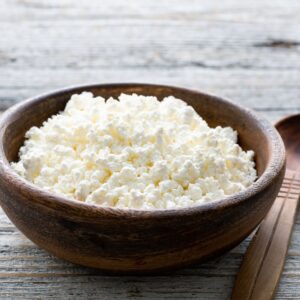
Easy Authentic Ricotta Cheese Recipe
Creamy homemade ricotta cheese made in your own kitchen with just 3 simple ingredients.
Equipment
- Heavy Bottomed Pot
- Candy thermometer optional, but extrememly helpful
- Slotted spoon
- Colander
- Large bowl
- Cheesecloth
Ingredients
- 8 cups whole milk
- 1½ teaspoon salt
- 3 tablespoons freshly squeezed lemon juice or white vinegar
Instructions
- Line a colander or a fine-mesh sieve with a large piece of lightly dampened cheesecloth that has been folded over itself a few times. Place the colander over a large bowl.
- Add the milk and salt to a large heavy-bottomed pot.
- Gently heat over medium-high heat, stirring frequently with a wooden spoon to prevent the milk from scorching on the bottom of the pan.
- If you have a thermometer, we are aiming for a temperature between 180°F and 190°F. If you do not have a thermometer, look for little bubbles close to the edge of the pot, and the formation of a slight film. The milk will become foamy, but should never hit a rolling boil. This will take approximately 10-15 minutes. Milk can boil and scorch faster than you think so just have a little patience and watch it closely.
- Lower the heat to low.
- Slowly add the lemon juice (or vinegar).
- Gently agitate the mixture for a minute or so. You will notice the ricotta curds separating from the whey (the yellowish leftover liquid).
- Remove from the heat.
- Cover the pot and let stand for about 20 minutes.
- Using a slotted spoon, carefully transfer the curds into the cheesecloth, allowing the whey to drain. Let it drain for 10 -60 minutes, depending on your desired ricotta consistency. For a creamy consistency don't let it drain too long. The longer it sits, the drier and thicker it will be.
- Transfer the homemade ricotta cheese to a bowl, season with salt to taste, and stir gently.
- Use immediately or refrigerate in an airtight container for 3-4 days.